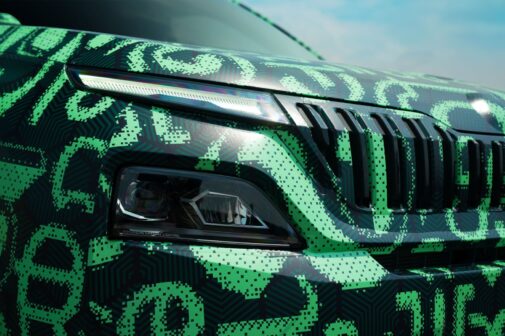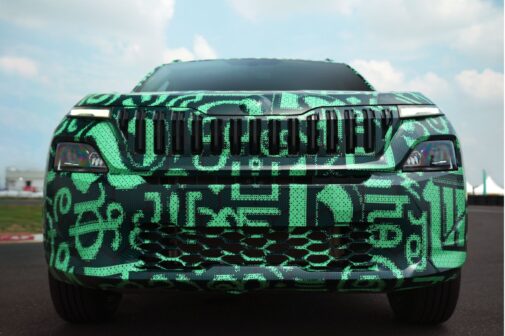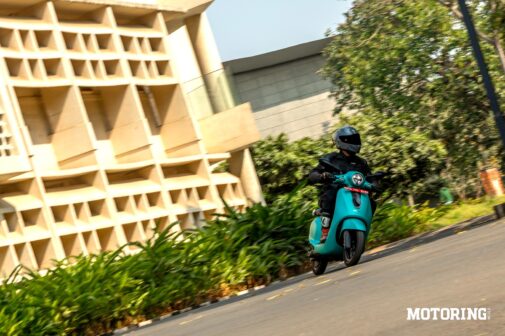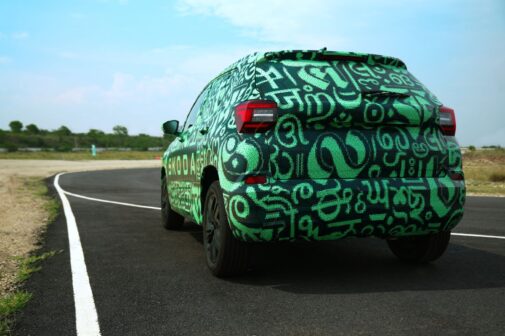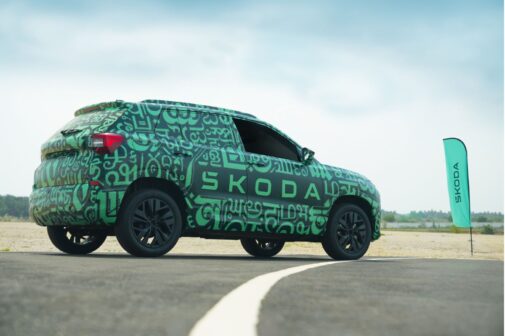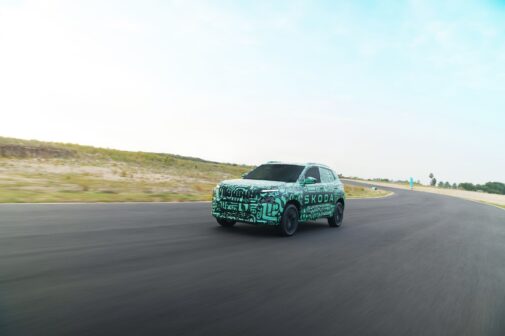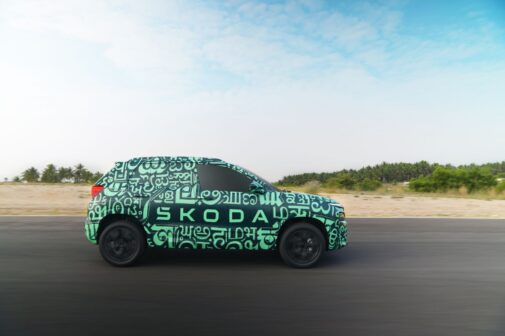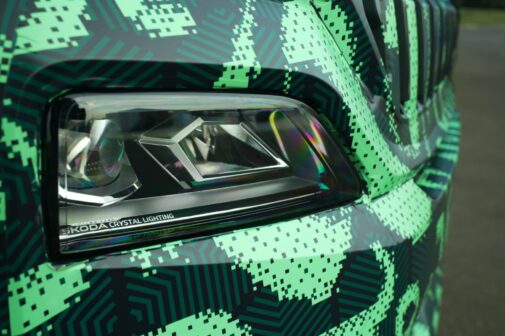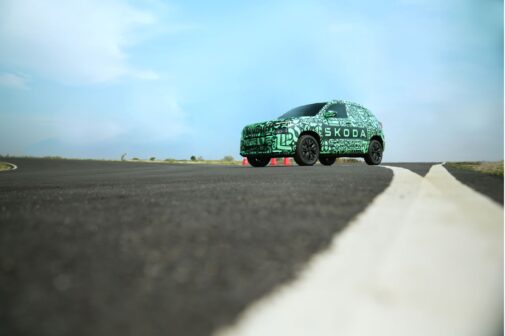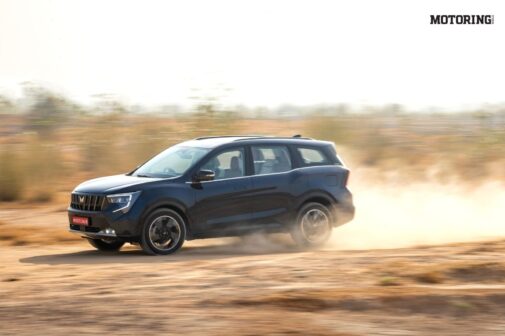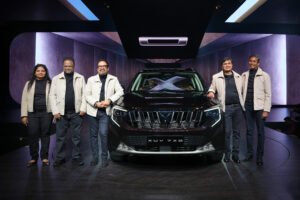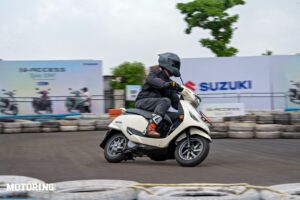Photographs by Skoda
I’m usually not a numbers man, but here are a few interesting figures from the Indian passenger car market. A whopping 62 per cent is made up of the sub-4 metre segment, and 30 per cent of that consists of vehicles with SUV body styles (I say ‘body styles’ with some deliberation, since almost all these cars are little more than hatchbacks on stilts, no matter what the marketing spiels claim). Thus the compact SUV segment is the single largest one in the PV market, and you would thus have expected every manufacturer worth their sub-4 metre to have leapt into it with both feet from the get go. Most OEMs did so, and have been reaping differing levels of benefits ever since; the Magnite, for example, singularly hauled Nissan out of the doldrums in India. Skoda (and VW, by definition) has been a notable exception; the smallest SUV it sells is the Kushaq, a vehicle that has many strengths – and a few weaknesses in the features department. With the Kylaq, Skoda hopes to finally plug a significant gap in its portfolio, both in India and in global markets.
To begin with, the car had to tick one important box, which was a name beginning with a ‘K’ and ending with a ‘Q’. As is well known by now, the firm came up with ten such names and ran an India-wide contest to pick the winning one; Skoda Kylaq came out on top (it’s apparently inspired by Mt. Kailash, and is a derivative of the Sanskrit word for crystal). This will be Skoda’s first ever compact SUV, of course; it will also be the third product that will ride on the MQB A0 IN platform, the first car under the company’s India 2.5 plan and the first model to features some of Skoda’s ‘Modern Solid’ design language; you’re thus likely to see some elements from the recently revealed Elroq on the Kylaq as well.
Now, I can confirm that I have seen what is essentially the final production version of the Kylaq in the flesh, unencumbered by any camouflage, during a visit to Skoda’s design headquarters in Prague. What I can tell you without breaking any sort of embargo is that it is unmistakably a Skoda; a slightly distilled version of the Kushaq, if you will. It will get a split headlamp design, LED DRLs and a fairly wide grille with vertical slats up front, along with a lightly sculpted bonnet. The profile is unfussy and a bit bland, if I’m honest, but that’s salvaged to some extent by a new alloy wheel design that fills out the arches quite nicely; the smoky-grey shade of paint on the wheels looks cool, too, and there are roof rails, a shark-fin antenna and a sunroof. At the rear, the tail lights are squared up, with LED DRLs in an inverted-L shape.
Even when heavily camouflaged in the rather cool multilingual wrap that you see in the photographs, you can tell that it has a very crisp, compact shape, with a 3995 mm overall length, a wheelbase of 2566 mm and tighter front and rear overhangs than the Kushaq; the ground clearance figure of 189 mm is substantial. All in, I’d describe the Kylaq as being cohesively designed; it’s not something that is loud or over the top – in fact, I think it runs the risk of being a little bland on the design side, which is something that Skoda will need to look at, since Indian buyers do like a bit of bling, and first impressions are everything in a segment as competitive as this.
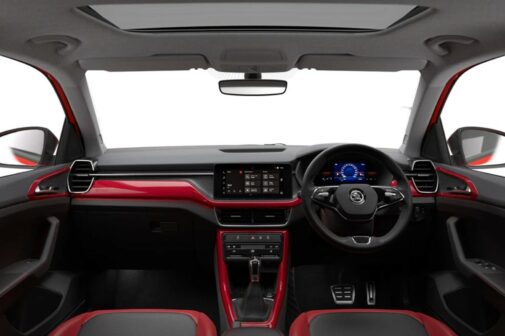
What’s the interior like? Well, since the cars at the drive were heavily taped up inside and out, I can only make educated guesses, the first of which is that it’ll be very similar to the Kushaq; I don’t think it will be practical for Skoda to really reinvent the wheel in this regard. The touchscreen infotainment system was fully visible, and it’ll be familiar if you’ve seen the Kushaq’s cabin; the steering wheel will be, too, with its shape and the various controls built into it. Like most Skodas, the cabin will likely have a predominance of black, with some silver/chrome accents; the seats in the test cars were firm but comfortable, with good back and thigh support and enough leg room for my 5’11” frame. As with most cars in the segment, a third person sitting at the back will not be very comfortable over long stretches of driving. The cabin doesn’t feel exceptionally roomy, but I’ll reserve full judgement for when I sit in the production-spec car; this one had its pinched rear windows taped up, so there wasn’t much light entering the rear bench.
Skoda says it’ll address the features question fully with the Kylaq, meaning that it’ll probably get more of them than the Kushaq and Slavia – ventilated and powered front seats, a (non-panoramic) sunroof, 360-degree camera, an ADAS suite, wireless smartphone charging and Android Auto Apple Carplay, auto climate control, parking sensors, cruise control and so on; things that buyers take fully for granted in this segment, in other words. In line with its ‘simply clever’ messaging, the cabin will have a plethora of cup-holders, coat and luggage hooks, ticket and smartphone holders and a variety of other storage spaces. Boot space will likely be in the region of 350 litres, and safety should be well covered, since the Kushaq and Slavia both have 5-star GNCAP ratings; standard active and passive safety features will include six airbags, ABS, traction and stability control, EBD, multi-collision braking, brake disc wiping and a few others.
At the business end of things, the only engine on offer will be the familiar 1-litre, three-cylinder turbo-petrol, putting out 115 bhp and 18 kgm of torque; a 6-speed manual and a 6-speed torque convertor automatic will be available, and these engine-gearbox combinations won’t feel alien to those who have driven the current lineup of Skodas. During the very brief drives that we were allowed at the new CoASTT high performance track in Coimbatore, the automatic was unsurprisingly the slightly more leisurely of the two gearboxes, but also the one that will suit everyday driving far better; with our traffic conditions, an automatic is a no-brainer, especially one from the VW group.
The engine felt exactly as I thought it would – punchy once revved hard, a little bit gruff-sounding (inevitable, with three cylinders) and eager to play along with spirited driving. There’s a slight lack of grunt below 2000 rpm, but once the turbo kicks in, there’s a lively nature to the Kylaq that is quite entertaining, especially with the 6-speed manual ‘box. Enthusiasts will prefer it to the automatic, although a little less firmness while rowing through the gears would have been nice; the gear lever’s throw is also a bit long – a shorter gear lever would also have been ideal.
I expect all Skodas to have very good ride and handling abilities, and I can tell you that the Skoda Kylaq will be the segment-leader in these areas. While hustling around the CoASTT circuit, the Kylaq showed exemplary chassis control and grip, with no discernible understeer and body-roll even when pushed really hard. Next to nobody who buys a Kylaq will ever drive in this manner, so it’s safe to say that in real world conditions, the Kylaq will be a confidence-inspiring car. Over a long stretch of unpaved road, with lots of pebbles, bumps and other undulations, the ride quality on offer felt assured, with everything being soaked up and kept well at bay from the cabin, in both the front and rear seats. With the extensive all-weather torture testing that Skoda says it has put the Kylaq through, it should be a robust car (on paper, anyway). Still, like I said, attributes like ride, handling, safety, solidity and a fun-to-drive nature are things I take for granted in a Skoda, and they’re not really what the brand needs to focus on with the Kylaq.
Instead, the crucial aspects will be a striking exterior design, a bucketload of standard features, that feel-good factor and a satisfying sales and service experience. Naturally, Skoda’s pricing strategy will have to be spot on, and with the MQB A0 IN platform already significantly localised, it has the wherewithal to begin the Kylaq’s innings with all guns blazing. Looked at another way, Skoda has no choice but to do so, if it wants to make any kind of impact in a segment that has the Maruti Brezza, Hyundai Venue, Mahindra 3XO and Kia Sonet as direct competition, with models like the Tata Punch, Maruti Fronx and Hyundai Exter nipping at its heels one segment below. From the limited time I got with the car, it seems to have the fundamentals in place to make a go of it.










